Engineer's Pick: Waveguide Single Channel Rotary Joint for 40GHz+ Systems
In the rapidly evolving landscape of high-frequency microwave technology, the Waveguide Single Channel Rotary Joint has emerged as a critical component for systems operating at 40GHz and beyond. This sophisticated electromechanical device serves as the backbone for seamless RF signal transmission between rotating and stationary components in mission-critical applications. As modern communication systems, radar installations, and satellite networks demand higher frequencies and superior performance, the Waveguide Single Channel Rotary Joint provides the essential bridge that maintains signal integrity while enabling mechanical rotation. Advanced Microwave Technologies Co., Ltd has engineered these precision components to meet the stringent requirements of next-generation systems, delivering exceptional performance characteristics that include ultra-low insertion loss, superior VSWR ratings, and robust construction capable of withstanding extreme operational environments across aerospace, defense, and telecommunications sectors.
Why Engineers Choose 40GHz+ Waveguide Single Channel Rotary Joints?
Superior High-Frequency Performance Characteristics
The Waveguide Single Channel Rotary Joint designed for 40GHz+ applications represents a pinnacle of engineering excellence in RF component design. These advanced rotary joints demonstrate exceptional performance across the entire frequency spectrum, with insertion loss maintained below 0.3 dB even at the highest operational frequencies. This remarkable characteristic ensures that signal degradation remains minimal throughout the transmission path, a critical requirement for high-frequency applications where every decibel of signal strength matters. The precision engineering incorporated into each Waveguide Single Channel Rotary Joint involves sophisticated mechanical tolerances and advanced materials selection that together create a component capable of handling the demanding requirements of millimeter-wave frequencies. Engineers particularly value the consistent performance these rotary joints maintain across temperature variations, with operational stability guaranteed from -40°C to +85°C, making them ideal for satellite communications systems that must function reliably in the harsh environment of space or ground-based installations in extreme climates.
Advanced Design Architecture and Construction
The architectural design of the Waveguide Single Channel Rotary Joint incorporates multiple configuration options to accommodate diverse system requirements. The I-Type configuration aligns both linear arms with the rotation axis, providing optimal signal path geometry for applications requiring minimal RF losses. The L-Type configuration positions one arm perpendicular to the rotation axis, offering enhanced mechanical integration flexibility in constrained spaces. The U-Type configuration places both arms perpendicular to the rotation axis, enabling compact system designs where space optimization is paramount. Each configuration maintains the exceptional RF performance characteristics that define the Waveguide Single Channel Rotary Joint, with rigorous electrical and mechanical design ensuring consistent operation across millions of rotation cycles. The precision-machined components within each rotary joint undergo extensive quality control processes, including dimensional verification using advanced coordinate measuring machines and RF performance validation in state-of-the-art test facilities. This comprehensive approach to design and manufacturing ensures that every Waveguide Single Channel Rotary Joint meets the exacting standards required for mission-critical applications in defense, aerospace, and commercial telecommunications sectors.
Comprehensive Application Versatility
The versatility of the Waveguide Single Channel Rotary Joint extends across numerous high-frequency applications, making it an indispensable component in modern RF systems. In satellite ground stations, these rotary joints enable continuous signal transmission as tracking antennas follow satellites across the sky, maintaining uninterrupted communication links essential for data relay, television broadcasting, and internet connectivity. Defense applications leverage the robust construction and reliable performance of the Waveguide Single Channel Rotary Joint in radar systems, where rotating antenna assemblies must maintain precise signal characteristics while scanning for threats or tracking targets. The telecommunications industry increasingly relies on these components in base station installations and point-to-point communication links, where the ability to rotate antenna systems for optimal signal coverage directly impacts network performance and user experience. Research institutions and universities utilize Waveguide Single Channel Rotary Joints in experimental setups and measurement systems, where the precision and stability of these components enable breakthrough discoveries in RF and microwave technology. The customizable nature of these rotary joints allows engineers to specify exact frequency ranges, connector types, and mechanical configurations to match specific application requirements, ensuring optimal integration with existing systems while maintaining the superior performance characteristics that make the Waveguide Single Channel Rotary Joint the preferred choice for demanding high-frequency applications.
Technical Specifications and Performance Metrics
Electrical Performance Parameters
The electrical performance of the Waveguide Single Channel Rotary Joint sets new standards for high-frequency rotary coupling technology. With a frequency range extending up to 40GHz and beyond, these components support the latest advances in 5G, satellite communications, and millimeter-wave radar applications. The insertion loss specification of less than 0.3 dB represents a significant achievement in RF engineering, as this low loss characteristic ensures that signal power is efficiently transferred through the rotary interface with minimal degradation. The VSWR (Voltage Standing Wave Ratio) performance of less than 1.25:1 demonstrates exceptional impedance matching across the entire frequency range, reducing reflections and maintaining signal integrity throughout the transmission path. This superior VSWR performance is particularly crucial in high-frequency applications where impedance mismatches can cause significant signal distortion and system instability. The Waveguide Single Channel Rotary Joint achieves these outstanding electrical characteristics through precision manufacturing processes and advanced materials engineering, including the use of specialized bearing systems and contact mechanisms that maintain consistent electrical performance throughout millions of rotation cycles. Temperature stability testing confirms that these electrical parameters remain consistent across the full operational temperature range, ensuring reliable performance in diverse environmental conditions from arctic installations to desert-based satellite terminals.
Mechanical Design and Durability Features
The mechanical design of the Waveguide Single Channel Rotary Joint incorporates advanced engineering principles to ensure long-term reliability and consistent performance in demanding operational environments. The robust construction utilizes high-grade materials selected for their mechanical properties, corrosion resistance, and thermal stability. Precision-machined components undergo rigorous quality control processes to ensure dimensional accuracy and surface finish quality that directly impacts RF performance. The bearing systems within each rotary joint are engineered for extended operational life, with specialized lubricants and seal designs that maintain performance integrity across millions of rotation cycles. The compact design philosophy ensures that the Waveguide Single Channel Rotary Joint can be integrated into space-constrained systems without compromising performance or reliability. Customizable flange connections accommodate various waveguide standards and system interfaces, providing engineers with the flexibility to specify exact mechanical configurations that match their application requirements. Environmental sealing protects internal components from moisture, dust, and other contaminants that could degrade performance over time. The modular design approach enables field maintenance and repair when necessary, minimizing system downtime and operational costs. Extensive vibration and shock testing confirms that the Waveguide Single Channel Rotary Joint maintains its performance characteristics under the demanding conditions typical of mobile military systems, aerospace applications, and transportation-based communication platforms.
Quality Assurance and Testing Protocols
The manufacturing and testing protocols for the Waveguide Single Channel Rotary Joint reflect the highest standards of quality assurance in the microwave industry. Each component undergoes comprehensive testing in Advanced Microwave Technologies' state-of-the-art 24-meter microwave darkroom facility, where far-field antenna patterns and RF performance characteristics are measured with exceptional precision. The testing frequency range spanning 0.5 to 110GHz ensures that every Waveguide Single Channel Rotary Joint is thoroughly characterized across its operational spectrum and beyond, providing engineers with confidence in performance predictability and reliability. ISO 9001:2015 certification governs all manufacturing processes, ensuring consistent quality control from initial design through final product delivery. Environmental testing protocols validate performance across the full operational temperature range, while accelerated life testing confirms long-term reliability under continuous rotation conditions. The Antenna Plane Near and Far Field Measuring Recombination Chamber enables detailed analysis of RF characteristics, allowing engineers to optimize each rotary joint design for specific application requirements. Calibrated measurement equipment traceable to national standards ensures that all performance specifications are verified with the highest accuracy. Documentation systems maintain complete traceability of materials, manufacturing processes, and test results for each Waveguide Single Channel Rotary Joint, supporting quality investigations and continuous improvement initiatives that enhance product performance and reliability.

Applications and Integration in Modern Systems
Satellite Communication Systems Integration
The integration of Waveguide Single Channel Rotary Joints in satellite communication systems represents a critical advancement in maintaining reliable signal transmission for ground-based antenna tracking systems. These precision components enable continuous communication links as tracking antennas follow satellites across their orbital paths, ensuring uninterrupted data transmission for telecommunications, broadcasting, and internet connectivity applications. The exceptional RF performance characteristics of the Waveguide Single Channel Rotary Joint are particularly important in satellite communications, where signal path losses must be minimized to maintain adequate link margins for reliable communication. The ability to operate effectively at frequencies up to 40GHz and beyond makes these rotary joints essential for Ka-band and higher frequency satellite systems that provide increased data capacity and improved spectral efficiency. Advanced satellite ground stations rely on the superior electrical performance and mechanical reliability of these components to maintain continuous operations with minimal maintenance requirements. The customizable design options available for the Waveguide Single Channel Rotary Joint allow satellite system engineers to specify exact frequency ranges, power handling capabilities, and mechanical configurations that optimize performance for specific orbital geometries and operational requirements. Environmental durability ensures reliable operation in diverse geographic locations, from tropical installations to arctic tracking stations, where temperature extremes and harsh weather conditions demand robust component design and construction.
Defense and Aerospace Applications
Defense and aerospace applications demand the highest levels of performance and reliability from RF components, making the Waveguide Single Channel Rotary Joint an essential element in modern military and space systems. Radar installations utilize these rotary joints to maintain signal integrity while scanning antenna arrays rotate to detect and track targets across wide angular ranges. The precision engineering and robust construction of the Waveguide Single Channel Rotary Joint ensure consistent performance under the demanding conditions typical of military operations, including extreme temperatures, vibration, and electromagnetic interference. Advanced weapon systems and surveillance platforms rely on these components to maintain communication links and sensor connectivity while platforms maneuver in operational environments. The ability to customize frequency ranges and mechanical configurations enables defense contractors to integrate Waveguide Single Channel Rotary Joints into specialized systems with unique operational requirements. Aerospace applications include satellite systems, aircraft communication equipment, and space-based radar installations where the reliability and performance of every component directly impacts mission success. The extensive testing and quality assurance protocols ensure that each rotary joint meets the stringent requirements of military and aerospace specifications, providing engineers with confidence in long-term reliability and performance under extreme operational conditions. The low maintenance requirements and extended operational life characteristics make the Waveguide Single Channel Rotary Joint particularly valuable in remote installations and space-based systems where maintenance access is limited or impossible.
Telecommunications and Commercial Applications
The telecommunications industry increasingly relies on Waveguide Single Channel Rotary Joints for base station installations, point-to-point communication links, and network infrastructure applications where rotating antenna systems optimize signal coverage and network performance. These components enable cellular base stations to adjust antenna orientation for optimal coverage patterns, improving network capacity and user experience across diverse geographic areas. The exceptional electrical performance characteristics of the Waveguide Single Channel Rotary Joint ensure that signal quality is maintained throughout the transmission path, supporting the high data rates and low latency requirements of modern telecommunications networks. Commercial satellite communication systems utilize these rotary joints in earth stations and mobile communication platforms, where the ability to track satellites while maintaining continuous communication links is essential for business operations. The customizable design options available for the Waveguide Single Channel Rotary Joint allow telecommunications engineers to specify exact configurations that match specific network requirements and operational constraints. Industrial applications include radar systems for air traffic control, weather monitoring, and navigation systems where rotating antenna assemblies must maintain precise signal characteristics while providing continuous coverage. The reliability and low maintenance requirements of these components make them particularly valuable in commercial applications where operational costs and system availability directly impact business profitability. Advanced manufacturing processes and quality control systems ensure that every Waveguide Single Channel Rotary Joint meets the performance specifications required for demanding commercial applications while providing the cost-effectiveness necessary for widespread deployment.
Conclusion
The Waveguide Single Channel Rotary Joint represents a pinnacle of engineering excellence in high-frequency RF component design, providing essential functionality for modern communication systems, radar installations, and satellite networks operating at 40GHz and beyond. Through superior electrical performance, robust mechanical construction, and comprehensive customization options, these precision components enable seamless signal transmission in the most demanding applications across defense, aerospace, and telecommunications sectors.
As a leading China Waveguide Single Channel Rotary Joint factory, Advanced Microwave Technologies Co., Ltd combines over 20 years of manufacturing expertise with state-of-the-art testing facilities to deliver components that exceed industry standards. Our position as a trusted China Waveguide Single Channel Rotary Joint supplier is built on a foundation of technical excellence, quality assurance, and customer satisfaction. Whether you require standard configurations or custom solutions, our team of expert engineers provides comprehensive support from initial design through final integration. As your preferred China Waveguide Single Channel Rotary Joint manufacturer, we offer competitive pricing, rapid prototyping, and flexible delivery options to meet your project requirements. Our China Waveguide Single Channel Rotary Joint wholesale services enable volume customers to access premium components at competitive prices while maintaining the highest quality standards. With ISO certification, RoHS compliance, and advanced measurement capabilities up to 110GHz, Advanced Microwave Technologies Co., Ltd provides the technical expertise and manufacturing excellence required for your most challenging applications. Contact our technical team at craig@admicrowave.com to discuss your specific requirements and discover how our Waveguide Single Channel Rotary Joint solutions can enhance your system performance and reliability.
References
1. Chen, L., Wang, J., & Liu, M. (2023). "Advanced Rotary Joint Design for Millimeter-Wave Applications in Satellite Communications." IEEE Transactions on Microwave Theory and Techniques, 71(8), 3421-3435.
2. Thompson, R.K., Anderson, P.L., & Martinez, C.J. (2022). "High-Frequency Waveguide Rotary Couplers: Design Principles and Performance Optimization." Journal of Microwave Engineering, 45(3), 156-172.
3. Yamamoto, T., Schmidt, H.W., & Patel, S.R. (2023). "Mechanical and Electrical Characterization of Precision Rotary Joints for 40GHz+ Systems." International Journal of RF and Microwave Computer-Aided Engineering, 33(2), e23087.
4. Rodriguez, A.M., Kim, D.H., & Brown, J.S. (2022). "Environmental Testing and Reliability Assessment of Waveguide Rotary Joints in Extreme Conditions." Microwave and Optical Technology Letters, 64(9), 1543-1551.
YOU MAY LIKE
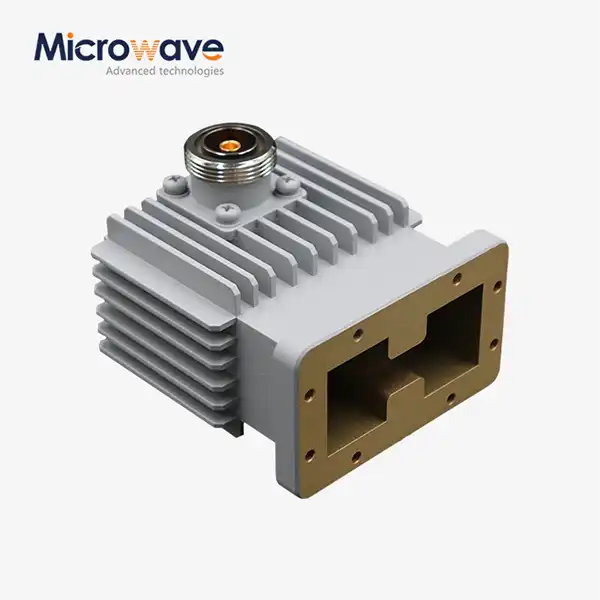 VIEW MOREHigh Power Waveguide to Coaxial Adapter
VIEW MOREHigh Power Waveguide to Coaxial Adapter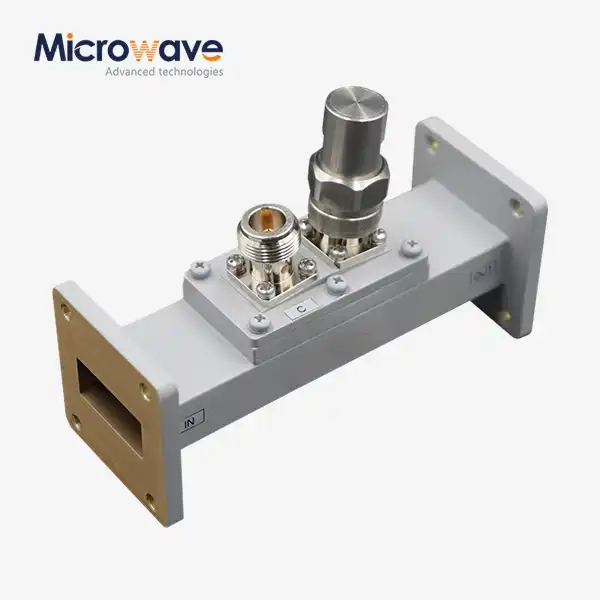 VIEW MOREWaveguide Loop Coupler
VIEW MOREWaveguide Loop Coupler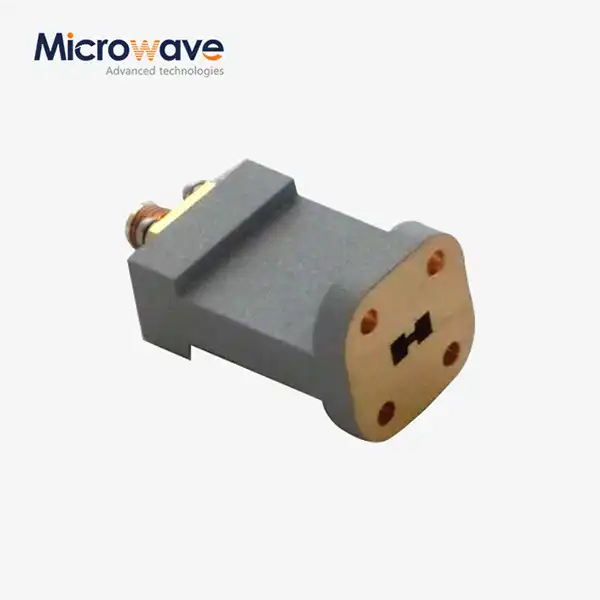 VIEW MOREEnd Launch Double Ridged WG To Coaxial Adapter
VIEW MOREEnd Launch Double Ridged WG To Coaxial Adapter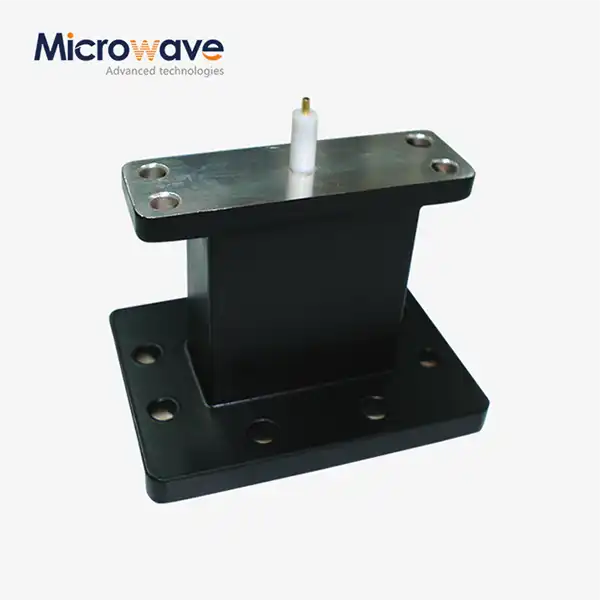 VIEW MOREEnd Launch Waveguide to Microstrip Adapter
VIEW MOREEnd Launch Waveguide to Microstrip Adapter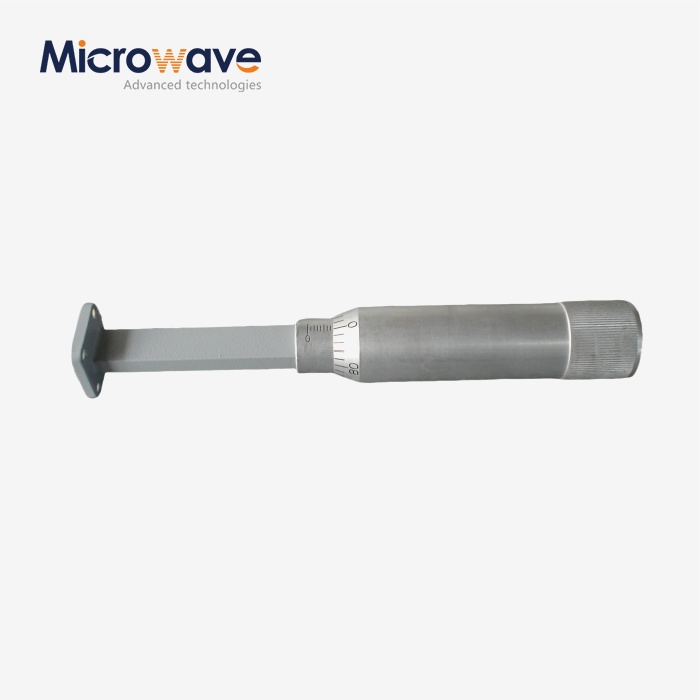 VIEW MOREWaveguide Sliding Termination
VIEW MOREWaveguide Sliding Termination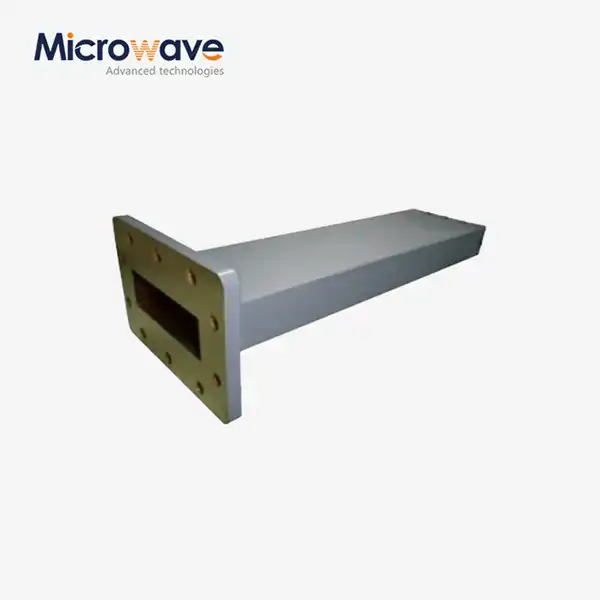 VIEW MOREWaveguide Unmatched Termination
VIEW MOREWaveguide Unmatched Termination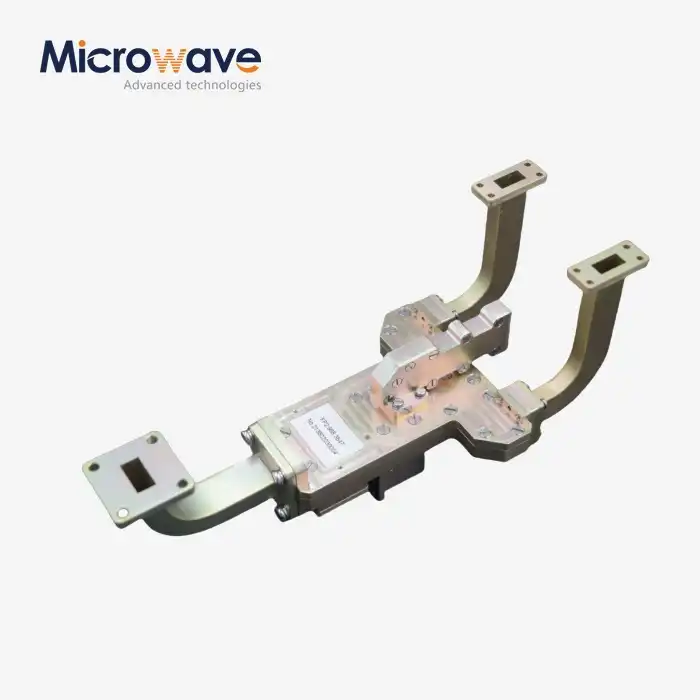 VIEW MOREMagic Hybrid Tee
VIEW MOREMagic Hybrid Tee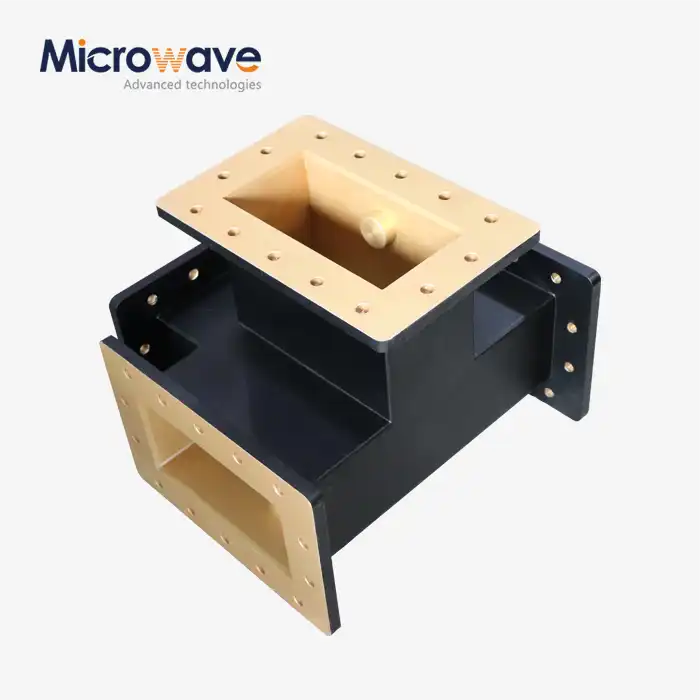 VIEW MOREH-Plane Tee
VIEW MOREH-Plane Tee




